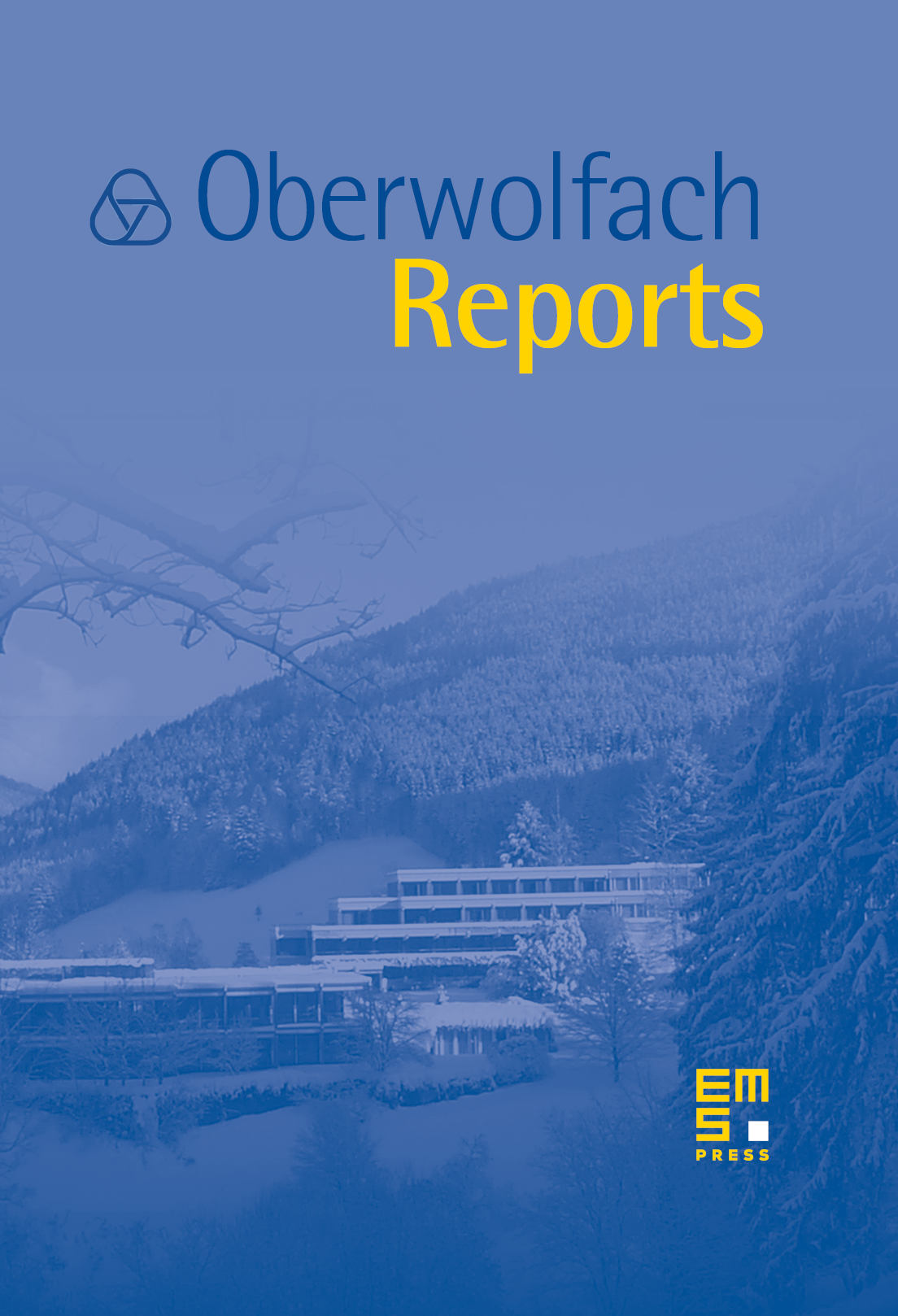Mini-Workshop: Topology of closed one-forms and Cohomology Jumping Loci
Michael Farber
Queen Mary University of London, United KingdomAlexander I. Suciu
Northeastern University, Boston, USASergey Yuzvinsky
University of Oregon, Eugene, United States

Abstract
This Mini-Workshop was organized by M. Farber (Durham), A. Suciu (Boston) and S. Yuzvinsky (Eugene). It brought together researchers working on two distinct, yet related topics:
- The topology of closed one-forms is a field of research initiated in 1981 by S. P. Novikov. In this version of Morse theory, one studies closed -forms and their zeroes instead of smooth functions and their critical points.
- The cohomology jumping loci are the support varieties for cohomology with coefficients in rank one local systems, and the related resonance varieties. In recent years, these varieties have emerged as a central object of study in the theory of hyperplane arrangements and related spaces.
Even though these two fields share some common roots, so far they have developed in parallel, with not much overlap or interaction. Nevertheless, it is becoming increasingly apparent that there are deep connections between the two theories, with potentially fruitful applications going both ways:
- An example is provided by the Lusternik–Schnirelmann category, and the related notions of category weight and topological complexity of robot motion planning. Such notions are amenable to being studied via closed -forms, and have applications to dynamical systems and motion planning in robotics. A good understanding of the cohomology ring and resonance varieties yields useful bounds.
- The Bieri–Neumann–Strebel invariants, which generalize the Thurston norm from -dimensional topology, are directly related to Novikov–Sikorav homology, Alexander invariants, and the resonance varieties.
- Undergirding some of this theory is a spectral sequence, introduced by Farber and Novikov in the mid 1980s. Recently, this machinery has been extended in a way that connects it to the cohomology jumping loci.
Given the multifaceted nature of these topics, the meeting brought together people with a variety of backgrounds, including topology, algebra, discrete geometry, geometric analysis, and singularity theory. Several participants were recent Ph.D.'s, most of them on their first visit to Oberwolfach. In all, there were 16 people attending the workshop (including the organizers), coming from the United States, Great Britain, France, Romania, Canada, and Germany.
The Mini-Workshop provided a lively forum for discussing a host of questions related to the themes listed above. The day-by-day schedule was kept flexible, and was agreed upon on short notice, making it possible to shape the program on-site, and in response to the interests expressed by the participants. The borderline between problem sessions and formal lectures were often blurred. Spending a concentrated and highly intense week in a relatively small group allowed for in-depth and continuing conversations, in particular with new acquaintances. These opportunities were enhanced by the diversity of backgrounds of the participants.
A basic objective of the Mini-Workshop was to bring together some of the people most actively working in two related fields, and to seek common ground for further advances and collaborations. In the ideally suited research atmosphere at Oberwolfach, participants had the opportunity to explain their respective approaches, and the variety of techniques they use. The lively atmosphere and the free-flow of ideas led to a deeper understanding of the subject, to progress in solving several open problems, and to fruitful insights on how to attack new problems.
Cite this article
Michael Farber, Alexander I. Suciu, Sergey Yuzvinsky, Mini-Workshop: Topology of closed one-forms and Cohomology Jumping Loci. Oberwolfach Rep. 4 (2007), no. 3, pp. 2321–2360
DOI 10.4171/OWR/2007/40